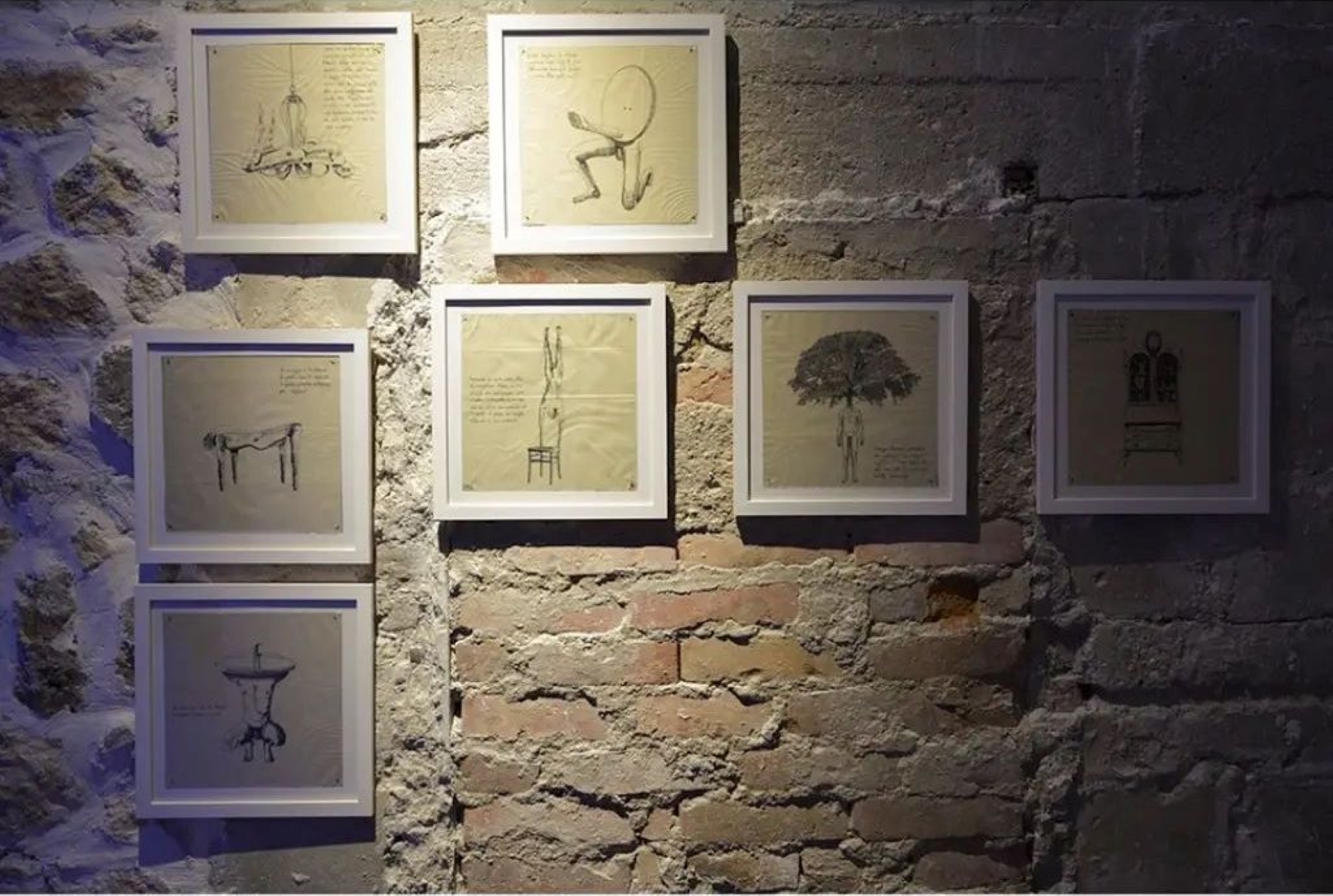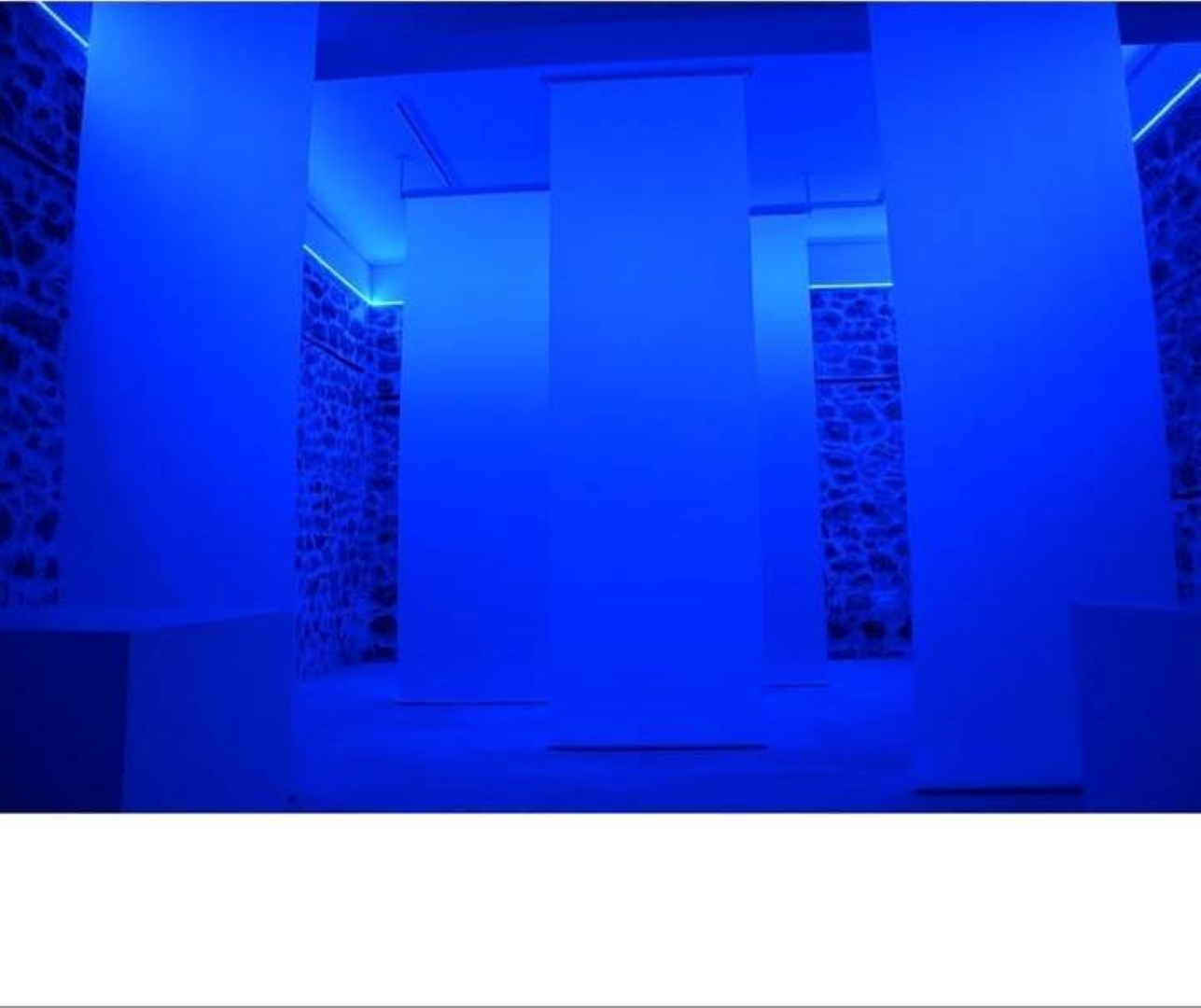Near an area known as the Historic Neighborhood in Vlora, officially named Justin Godard Street, ALPHA Gallery displays the exhibition “Punto di Rugiada”, which means dew drop. The exhibition features paintings by artist Stefano Romano and will remain open to the public until September 10th, 2021.

The exhibition comes as a result of the awareness that the Italian Institute of Culture wants to spread in the memory of the event of 6th -9th August, 1991, where over 20,000 Albanians landed in the city of Bari on board of the Vlora ship, an event that affected a whole generation of Italians. The IIC intends to commemorate this event on its 30th anniversary, addressing its opposite, the arrival of Italians in Albania. These journeys with different means resemble in their expectations and hopes.
The curator Francesco Scasciamacchia and the historical-documentary researcher Davide de Notarpietro, co-founders of the Cijaru (Otranto) Cultural Association, have guided the artist Stefano Romano in the realization of the works. The artist, who has been living in Albania since 2003, was inspired from his personal experience of emigration and the study of the water currents near the Strait of Otranto. The artistic result is motivated by the termo-dynamic phenomenon which allows the state of equilibrium between the water and the steam to be manifested on the sea surface, hence it was entitled dew drop. This coexistence serves as a metaphor for the movement of the immigrants from a place to another, their position between what they left behind and what they expect to find, with the purpose of reaching the balance of the sea surface.
Three groups of works form the complete experience of the exhibition at the ALPHA Gallery:
“Punto di Rugiada” (Dew drop, 2021), located in the center of the space, is an installation that aims to offer to the visitors the aesthetic and emotional experiencing of travel. The work features several sails made of tracing paper and set in motion by ventilators, the sounds of which are amplified by several wooden tubes, thus recreating the noise of a ferry engine. Immersed in a light which changes during 10 hours (the time it takes for the ferry to arrive to Bari from Durrës), the visitors will see how the light penetrates 12 shades of blue, imitating the journey from midnight to dawn.
“Dei viaggi e di cio che resta” (About travelling and on what remains, 2021) involves 6 rapidograph drawings on tracing paper, further sewn on a square of isothermal fabric, the same material used to protect the immigrants from the cold. Drawn subjects exist in a state between the man and other objects. Respectively the drawings are entitled : Lamp-Man, Parabola-Man, Tree-Man, Chair-Man, Cupboard-Man and Sink-Man. The anatomy of the subjects coincides with the titles. They appear as human objects, whose limbs, head or body do not follow their natural appearance but that of the object which accompanies the noun “man” in each of the works. They unconsciously identify with the objects of everyday life. Each of the drawings is accompanied by a “travel note” with phrases taken from books dedicated to the idea of travel and the subsequent identity transformation, which in Stefano Romano’s drawings has resulted in physical transformation.
“Note a Margine” (Notes on edge, 2021) consists of the digital processing of various Italian magazines and newspapers, designed as provisions. The author has selected newspapers that once covered the event of the beaching of the ship Vlora in Bari, but has intervened in them by adding or removing visual elements which had influenced the readers’ point of view on the event. He sheds a purely aesthetic light on the issue of migration, an essentially political phenomenon, but this time it appears free from the media narratives and the original notes.
*Stefano Romano operates in visual artistic media of performance, installation, video and photography. His work is driven by the purpose of presenting unexpected events and contradictions from the everyday social reality. The artist emigrated to Albania in 2003, thanks to a cultural exchange program at the Carrara Academy in Bergamo. He is dedicated to the performing arts. He has long been involved in the interest of contemporary art, often visual and public, as a freelance artist and as the founder of T.I.C.A (Tirana Institute of Contemporary Art), DZT (Two Zero Three) and MAPS (Mobile Archive of Public Space). His works have been exhibited in many international galleries and museums.







